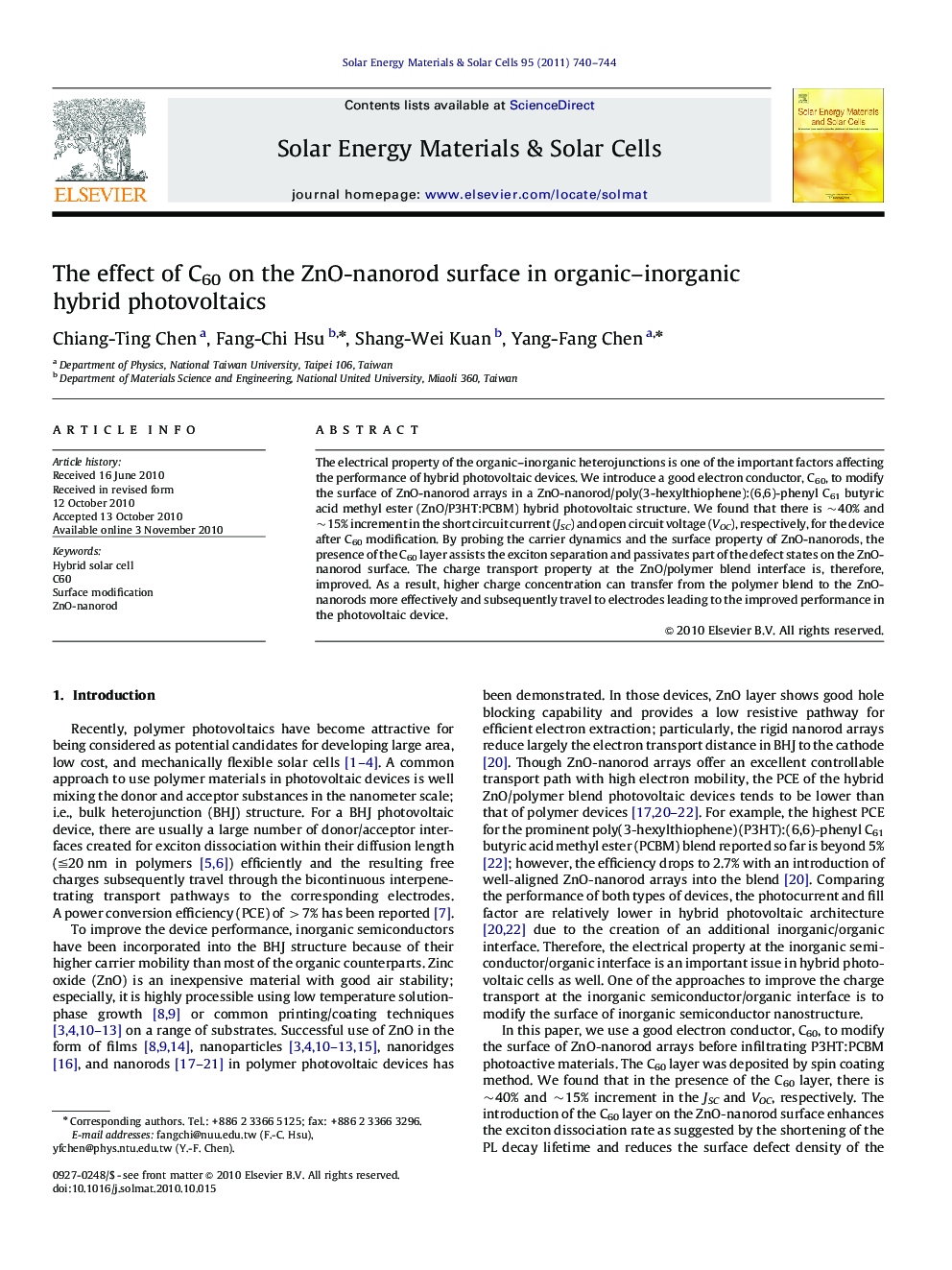| Article ID | Journal | Published Year | Pages | File Type |
|---|---|---|---|---|
| 79251 | Solar Energy Materials and Solar Cells | 2011 | 5 Pages |
The electrical property of the organic–inorganic heterojunctions is one of the important factors affecting the performance of hybrid photovoltaic devices. We introduce a good electron conductor, C60, to modify the surface of ZnO-nanorod arrays in a ZnO-nanorod/poly(3-hexylthiophene):(6,6)-phenyl C61 butyric acid methyl ester (ZnO/P3HT:PCBM) hybrid photovoltaic structure. We found that there is ∼40% and ∼15% increment in the short circuit current (JSC) and open circuit voltage (VOC), respectively, for the device after C60 modification. By probing the carrier dynamics and the surface property of ZnO-nanorods, the presence of the C60 layer assists the exciton separation and passivates part of the defect states on the ZnO-nanorod surface. The charge transport property at the ZnO/polymer blend interface is, therefore, improved. As a result, higher charge concentration can transfer from the polymer blend to the ZnO-nanorods more effectively and subsequently travel to electrodes leading to the improved performance in the photovoltaic device.
